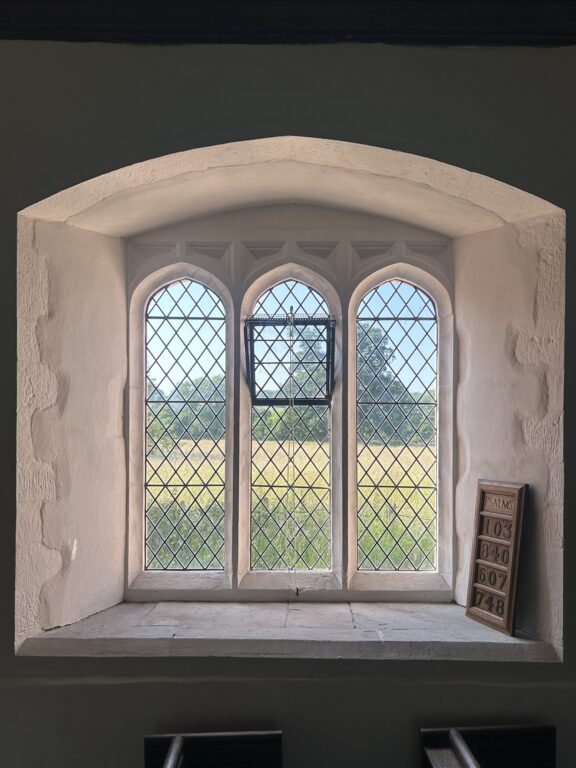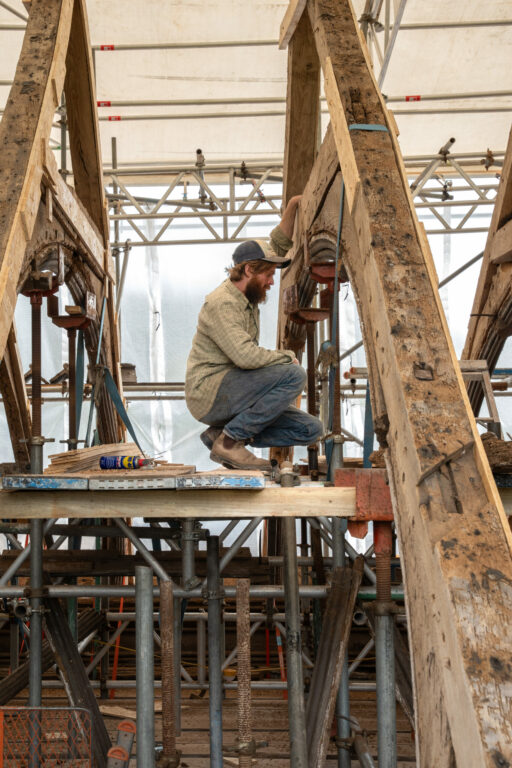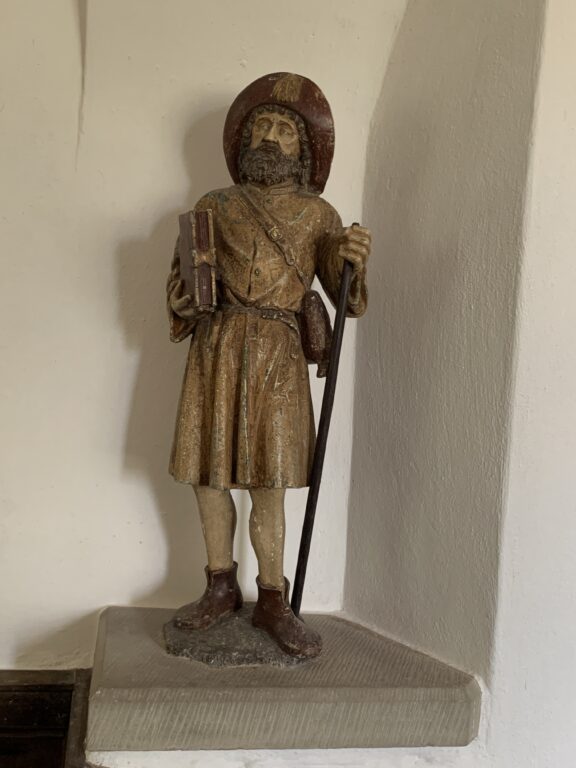
Llangua/Llangiwa
Grosmont
Monmouthshire
NP7 8HD
Open daily
OS grid reference
SO 392 258
what3words
materials.cascade.copySt James’s church is on the side of the A465, a very busy road with heavy traffic. Visitors should use extreme caution when accessing and departing the site. There are parking spaces outside the field gate to the church. Two cars or one large van can park comfortably. But we stress the need for caution when leaving or joining the A road.
Access to the church is via a stile to the side of a gate. If you require alternative access arrangements, please contact the office.
In high summer, with cattle cooling in the river, it is a sight of timeless bucolic beauty.
Originally dedicated to St Ciwa, a local female saint said to have been raised by wolves, the site probably had a pre-Conquest foundation. Following the initial Norman conquest of the Welsh kingdom of Gwent by William Fitz Osbern, the church at Llangua was given to the Benedictine Monastery at Lire in Normandy who established a monastic cell at Llangua. Nothing remains of the monastery today, but there are remains of a 13th-century mill near the church.
The earliest fabric of this building is 12th century, and includes the tub font and evidence of a Norman two-light window high in the gable of the west end. Most of the structure dates from the 14th-15th centuries, and this includes two magnificent wagon roofs over the chancel and nave. Stylistically, we believe the roof dates from 1475-1525, a great period of church reconstruction. New windows and a vestry were added by Thomas Nicholson of Hereford in 1889. During this time, the plaster was also scraped from the internal walls — as newspaper articles at the time confirm.
Between the nave and chancel, evidence for a rood screen and loft can be seen in an irregularity in the masonry, on which a characterful 16th-century statue of St James now stands. During our major repair campaign in 2024-25, we found carved and painted fragments of the roodscreen buried in the wall-head. More colourful figures can be seen on a 14th-century painted screen, which is believed to have come from a demolished chapel in Devon.
From April 2024 to May 2025, we undertook a substantial rescue project. This included extensive repair and strengthening of the wagon roofs, lime plastering, rendering and limewashing.

In 1954-5, our founder Ivor Bulmer-Thomas restored the church in memory of his young wife, Dilys, who had died after childbirth. It was the first church he restored, and less than three years later, Ivor created the Friends of Friendless Churches.
This charming little church has played a pivotal role in the history of heritage and church conservation in England and Wales. However, it became redundant in 2020, and is in a precarious condition, with its medieval roofs in danger of complete collapse. Thanks to a grant from the National Heritage Memorial Fund in 2023 and the Garfield Weston Foundation in 2024, we have been able to save this important and venerable building.
Our project “scrapbook” – a collection of images, ideas and articles – can be read by clicking the link below.




The button below links to church or local information on another website.
Become a Friend
Receive our printed magazine — exclusive to members — and help us rescue more closed, historically important churches.